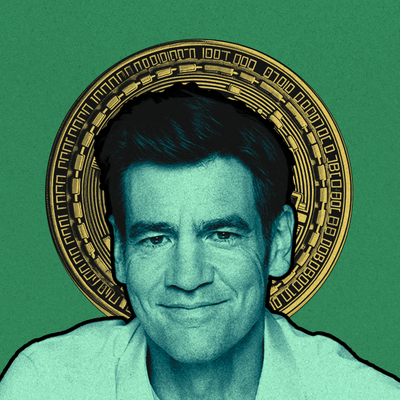
When our status is challenged, our body reacts like it's in physical danger. If you don't learn how to manage that reaction, you may find yourself in the status trap—endlessly chasing status as a way to try to feel safe and whole.
I experienced this myself when running my first company. We had been bootstrapping for a year when a competitor entered the space and raised $10 million.
This brought up a lot of insecurity. I was in my early 20s, with no real connections to mainstream investors. Our competitor was run by an ex-VC. Comparing myself to them, I felt like an outsider—like we were missing something or approaching the business wrong.
Years later, when I exited the company, this feeling stayed with me. I threw my energy into coming up with product ideas, hoping to start something new and get into YC. If I could do that, it felt like I’d finally be in the inner circle of tech and could call myself a Legit Founder™.
I’ve seen the same patterns in friends and clients. They feel like outsiders in comparison to tech’s “anointed ones,” and end up chasing external validation as a way to try to feel like they belong.
Instead of focusing on craftsmanship or doing work that matters, their life becomes about trying to get funded by Sequoia, go viral on Twitter, or give a TED Talk. External recognition becomes an end unto itself, often at the expense of their own values and vision.
This is what I call the “status spiral.” When we compare ourselves with those we perceive as higher status, we feel insecure and doubt our self-worth. This in turn leads us to chase status as a way to try to feel better about ourselves.
However, status is a poor salve for feelings of "not enoughness." Even when we achieve status, it doesn’t necessarily translate into self-acceptance. In fact, striving for status can actually make us feel even more like something is missing or wrong in our lives.
In this piece, we’ll explore several traps that lead to the status spiral while offering more skillful ways to deal with status insecurity when it arises.
The trouble with status
As humans, we have evolved to be constantly aware of status—our relative position within a group, and that group's relative position within broader society.
And yet our innate desire for status can get us stuck. Let’s examine three common traps around status: the trap of the inner ring, the body-builder trap, and the trap of false belonging.
The Trap of the Inner Ring
No matter where we find ourselves in society, there is always a more exclusive group to join and someone of higher status to compare ourselves with.
Author C.S. Lewis calls this the quest for the inner ring. He writes that we humans have a near-inexhaustible craving for exclusivity, yet as soon as we attain entry into an exclusive group, we find another group beyond it that we don’t yet have access to.
I’ve seen this with friends who go into VC with the intention of eventually leaving and starting a company. They begin by trying to get into a top-tier investment firm. Once they accomplish this, they find a hierarchy to navigate within the fund, then realize that the real inner ring in VC is occupied by the investors who land the hottest deals.
The desire to be part of this elite group can become an obsession, leading to a never-ending pursuit of network and reputation. At times, I’ve seen folks sacrifice their own dreams of starting a company, all in pursuit of entry into this inner circle.
This phenomenon is not limited to venture capital—it’s prevalent in most fields, including academia, sports, and politics. In each of these areas, the relentless pursuit of exclusivity can make us lose sight of what we really want.
The Body-Builder Trap
This brings us to the second pitfall of status: When we seek status as a way to escape feelings of “not-enoughness,” we often reinforce the core underlying belief that something is wrong with us.
Take the example of a bodybuilder who exercises from a place of hating their body and wanting it to change. Even if they do get in shape, this only serves to reinforce the link between body image and self-worth in their mind, leaving them hypersensitive to minor fluctuations in weight and anything that feels like a potential “flaw.”
While exercise may temporarily keep the demons at bay, their sense of worthiness remains fragile. The smallest imperfection can bring up self-loathing, turning workouts into a way to punish the body rather than a tool for self-care.
In the same way, when we chase status as a way to deal with feelings of insecurity, it gives power to those feelings in our lives. The more we focus on climbing the status ladder, the more attuned we become to social rejection and comparisons with others. This takes our focus away from what we truly want in life and instead turns our work into an ego-driven quest for recognition and validation.
The Trap of False Belonging
Finally, the third pitfall of status is that it gets in the way of experiencing true belonging. When we fear rejection, this can bring up feelings of deficiency or lack. These feelings, in turn, can hold us back from creating intimate connections with others, for fear of being judged or rejected.
I see this often when I run retreats for founders. As people get to know one another, they begin sharing their vulnerabilities. When they open up about their fears and insecurities—like “being a bad founder” or “toiling away in mediocrity”—something surprising happens.
Inevitably, it turns out that others in the group have similar fears or their own deep, dark secrets. We find that everyone in the group deals with shame and insecurity in some form—that these are common human emotions.
Yet, in day-to-day life, many of us deal with insecurity by trying to manage how we’re being perceived by others. We project a picture-perfect avatar of ourselves out into the world, lest others witness our true self.
While this is useful in some contexts, it can also lead us to feeling as if we don’t belong, even when we’re socially accepted. Paradoxically, the quest for status can keep us from sharing our fears—and finding places where we are accepted, flaws and all.
Avoiding the traps
The status spiral occurs when status-seeking and feelings of insecurity feed on each other, leading to an endless loop.
First, we experience a status trigger: an experience of social rejection or comparing ourselves with one another. Then, we experience a physiological stress response and a variety of thoughts and feelings meant to spur us into action. As our lives become about chasing status, we become increasingly sensitive to future status triggers—and the cycle repeats itself.
It’s kind of like quicksand. When you’re caught in a status cycle and thrash around trying to escape, you just end up getting more stuck.
To break out of a cycle like this, you first have to know that you’re in it. Then you have to stop struggling.
Knowing that you’re stuck
To learn to escape a status spiral, it helps to familiarize yourself with your own unique reaction to status. To do this, start by reflecting on a situation (real or imagined) that brings up status insecurity. This could be:
- A moment in the recent past when you felt excluded
- A person you often compare yourself with
- An exclusive group that you'd like to join but don't have access to
Alternatively, you could think about a status fantasy you have—giving a TED Talk, landing your dream role, working with the White House, etc. Where there is a strong status fantasy, there is often a raw or tender spot underneath.
To access the raw spot, you can reflect on what it’s like in this moment to lack that status. How do you experience the longing? And how do you feel about the “you” that has yet to achieve it? These questions can help point toward any sense of shame or insecurity that you may be trying to “solve” with external validation. Whatever you find, this is your status trigger. Once you have a situation or fantasy in mind, we can break down your status reaction into a handful of component parts:
- Thoughts
- Feelings
- Memories
- Urges
For example, here is a breakdown of the status reaction I shared at the start of this piece when I was bootstrapping my first company and our competitor raised a $10 million round:
Thoughts: - "Am I missing something as a founder?", “Have we f***ed this up?”
Feelings: pit in the stomach, fear of failure, shame about losing the first-mover advantage
Memories: feeling like an outsider in middle school, times I felt I didn’t belong
Urges: pivot to a VC-backed business, think about applying to YC
By writing out the above, I bring awareness to what my status reaction looks like, and I am more likely to catch it when it happens. The next time I feel a pit in my stomach and think I’m missing something as a founder, I’m more likely to think, Oh! This is a status trap, and stop feeding the status fantasies.
If you can bring awareness to the trigger as it happens, or to your internal reactions as they occur, you can begin to short-circuit the status spiral in its first loop.
Stopping the struggle
Once we’re aware that we’re caught in a status spiral, the next step is to stop struggling. So how can we do this?
Our main tool here is exposure. Exposure is one of the most effective psychological tools out there. It’s also one of the most uncomfortable. In a status-oriented exposure, we do exactly what we did above—we bring to mind a situation that raises challenging thoughts and feelings, and then we turn toward them, rather than trying to avoid or escape from them.
By dipping our toes into the pool of anxiety and willingly contacting those thoughts and feelings, we learn to tolerate shame and insecurity as normal parts of a human life.
When this happens, these thoughts and feelings no longer act as fuel on the status fire. We learn how to stay connected to what’s important to us, even in the face of shame and self-doubt, and we no longer need to chase status to fill whatever hole we’re feeling in our lives.
There are two primary ways to do a status exposure at home:
1. Expressive writing
Studies have shown that taking a stressful or traumatic event and writing about it for ~20 minutes for three or four consecutive days can have a significant impact on well-being.
To do this with status, pick an emotionally charged status experience from your past, and then write about it for several days in a row. This exercise is most effective if you can really make the memory come alive, remembering where you were, who you were with, and what you thought and felt at that time.
2. Guided visualization
Instead of writing about a situation, we can visualize and use mindfulness to work with whatever arises. Tara Brach’s RAIN meditations are good for this. In 10- to 30-minute meditations, they guide you to bring up a difficult experience and then practice relating to it compassionately.
(These self-guided exposure practices are meant for self-improvement rather than dealing with trauma or psychopathology. If your experience becomes overwhelming, you may want to find a therapist to support you in the exposure process.)
Moving toward meaning
While I have not explicitly mentioned Acceptance and Commitment Therapy (ACT), much of the breakdown above is informed by its theories. And from an ACT perspective, the next step after you’ve stopped the struggle is to move toward meaning.
When we are consumed by status, our lives become about managing our insecurities. So the question becomes:
If you weren’t so busy trying to prove your worth through status games, what would you want your life to be in service of?
Only you can answer that question—and whatever direction you choose to move toward in your life, status may eventually play a role in it.
Status, like money and power, is a form of capital. If we can learn to tolerate our feelings of “not-enoughness,” we can then use status in service of what we care about, rather than being addicted to it as an end in itself.
Casey Rosengren is a founder and executive coach based in New York. If you’d like to learn more about ACT and values-oriented coaching, drop him a note.
Ideas and Apps to
Thrive in the AI Age
The essential toolkit for those shaping the future
"This might be the best value you
can get from an AI subscription."
- Jay S.
Join 100,000+ leaders, builders, and innovators

Email address
Already have an account? Sign in
What is included in a subscription?
Daily insights from AI pioneers + early access to powerful AI tools










Comments
Don't have an account? Sign up!